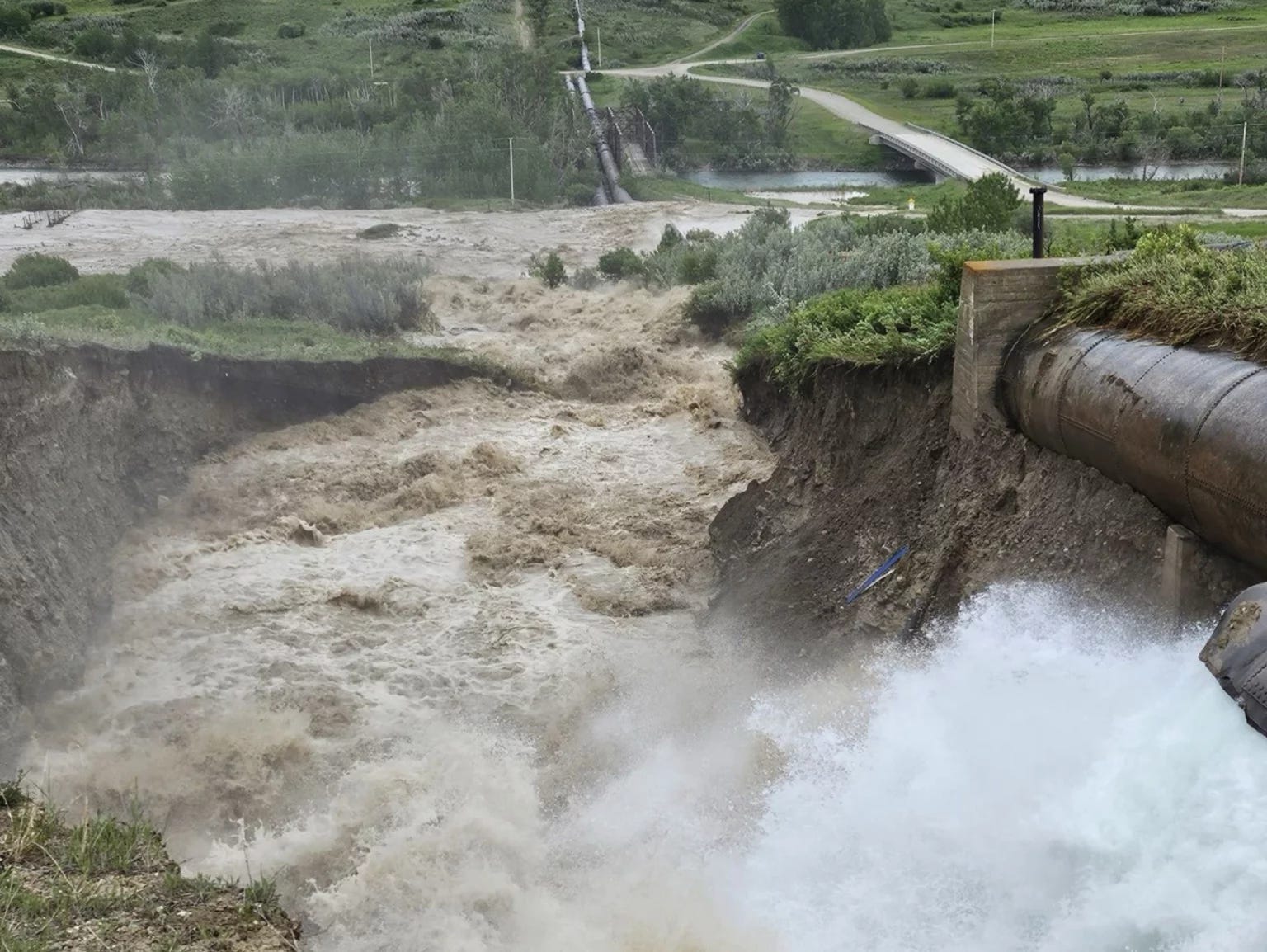St. Mary Siphon Back at Work, Bringing Water to Thousands of Montanans Ahead of Schedule
Catastrophic failure took place just a little more than one year ago
By Darrell Ehrlick, Daily Montanan

Just a little more than 12 months ago, the huge St Mary Siphon, more than a century old, which delivers water to thousands of ranchers and residents along Montana’s Hi-Line and eastern part of the state failed. On Wednesday, the United States Bureau of Reclamation announced the reconstruction project had been completed, thanks to an expedited review process by all levels of government and emergency funding from Congress.
Montana’s senior Senator, Steve Daines, cheered the completion.
“The St. Mary Siphon provides vital water to Montana communities along the Hi-Line, and the failures last summer were catastrophic. I’m beyond thrilled to hear that Reclamation has completed repairs on the siphons and is resuming operations on the Milk River Project,” Daines said.
The siphon, is one of three siphons along the St. Mary Canal which diverts water from the St. Mary River to the Milk River delivers a supply to more than 110,000 acres of farmland and municipalities across Montana.
“Getting this siphon back online within a year is a remarkable accomplishment and a reflection of our commitment to the people who rely on this water every day,” said Montana Area Office Manager Ryan Newman. “Reclamation, working shoulder to shoulder with the Joint Board, the Blackfeet Nation, and the State of Montana, ensured this project remained on track under extraordinary circumstances.”
The “catastrophic failure” of the siphon happened on June 17, 2024, and jeopardized the farmland as well as 18,000 people who rely on the system for water. Without the siphon and water supply, the Milk River would run dry six out of every 10 years.
Jennifer Patrick, project manager for the Milk River Joint Board of Control, had originally estimated the project at more than $70 million, and said the board was hopeful that a new siphon would be operational by Fall 2025. Despite a brutally harsh winter, which included temperatures dipping farther than -20 Fahrenheit, work continued ahead-of-schedule throughout the project.

“Bringing water back through the St. Mary Canal isn’t just a milestone—it’s a testament to what can be accomplished through strong partnerships and relentless hard work. The teams from Sletten Construction, NW Construction, and Pro-Pipe, with support from the Blackfeet Tribal Employment Office, have been nothing short of amazing. This project reflects what’s possible when local, state, Tribal, and federal partners come together with urgency and purpose to protect a lifeline of the Hi-Line,” Patrick said.
Though it has been called the “St. Mary Siphon,” the system is really two separate siphons, St. Mary and the Hall Coulee Siphon. Both deliver water, and construction crews completed the St. Mary siphon which is allowing water to flow, while crews work on replacing the Hall Coulee Siphon. Work on the second siphon will be able to continue while the full canal system is operational.
Officials with the bureau said that new project also tries to correct the deficiencies which plagued the old siphons, including modernized steel piping, reinforced concrete structures — all of which are meant to address seepage, corrosion and the occasional landslides in the area.
The Milk River Project estimates that 60% to 80% of the water used in its watershed comes from the diversion project.



